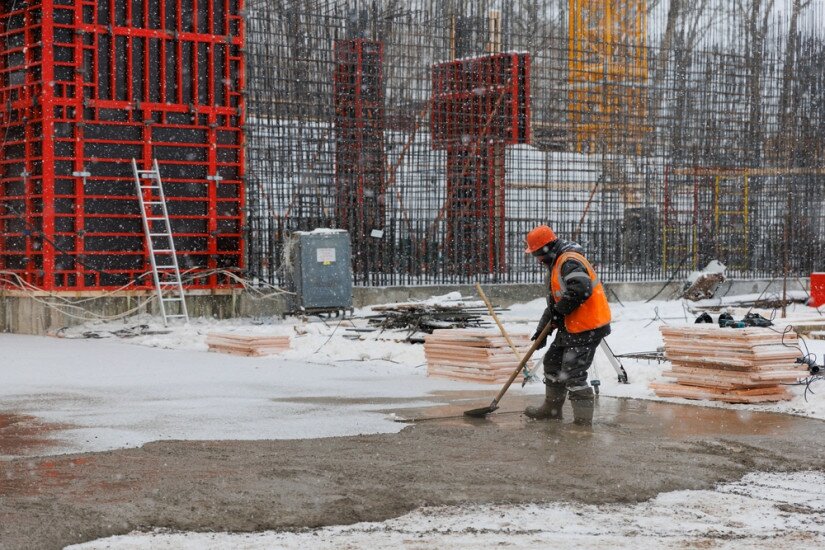How to store scaffolding in winter?
12 January 2026

Contrary to popular belief, concrete can be poured into formwork at any temperature, even sub-zero. You just need to follow the recommendations of experts to prevent the concrete from freezing. When done correctly, concrete poured in winter will be even stronger than concrete poured during hot weather due to the long curing period.
However, if the outdoor temperature drops below -7°C, it is best to prudently avoid pouring concrete outdoors, because at such temperatures hydration (saturation with water) stops. With extremely low air temperatures, it becomes very difficult to maintain a sufficiently high temperature on a construction site, even using insulating covers and fences.

So, a quick refresher course on pouring concrete.
Concrete changes from a liquid to a solid material through a chemical reaction. The colder the temperature of the concrete, the slower the reaction rate. In winter, your enemy is the cold. You must protect the concrete from freezing until it hardens enough to withstand the pressure caused by the freezing water within the concrete itself. The process of pouring concrete into formwork in winter is more difficult than in summer, since in order to set correctly and acquire sufficient strength, fresh concrete must be protected from freezing for the first 24 hours (at least).

If newly poured concrete freezes, you will suffer damage. Even if you then heat the concrete and let it harden, this will not help. If concrete freezes while it is still fresh or before it has gained sufficient strength to withstand the expansive forces associated with freezing water, the concrete loses up to 50 percent of its compressive strength.
Pay attention to the ground where you are pouring the concrete. The air temperature may be above freezing, but the ground may be frozen. And under no circumstances should you pour concrete into frozen ground. Insulate the ground with concrete sheets or plastic for several days before pouring. In winter, preheating one or more components (water and aggregate) will help maintain the desired temperature of the concrete during pouring. The water and/or sand and gravel should be heated before mixing.

Counteract the effects of cold temperatures by taking any or all of the following steps:
After pouring the concrete, protect it while it cures. Cold weather extends the deadline. The colder it gets, the longer it takes for concrete to set. Based on experience, builders know that every 10°C drop in concrete temperature doubles the set time. Thus, a pour that hardens in six hours at 20°C will take 12 hours at 10°C and 24 hours at -1°C.
During the winter months, concrete must be protected and cured for at least five days. Use blankets or straw over the plastic to insulate the concrete slab. If you leave the concrete exposed or expose it too early, the top layer of concrete may freeze and peel off. And even if it doesn't freeze, the outer layer will never be as strong as if it were protected.

Cold weather causes construction delays, even if you use formwork. Since everything is done on site, temperature changes affect the speed at which the walls can be built. The key to keeping delays to a minimum is to use heaters during the winter months so you can form, pour and build walls on site throughout the winter.
Be sure to cure the concrete for the number of hours recommended for the specific type of cement.

Seal freshly cured concrete by applying a sealant to prevent outside water from seeping into the concrete. Special concrete sealants extend its life and increase the likelihood of successful curing. At very low temperatures, only a breathable concrete sealant is used that allows moisture to evaporate.
To pour concrete in winter, you will need formwork, which you can buy on our website!
Also read the Blog “Formwork for the construction of shelters”.